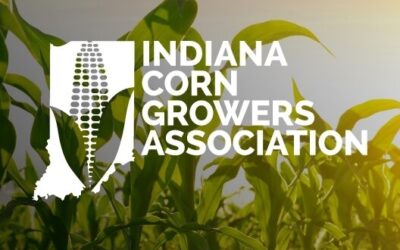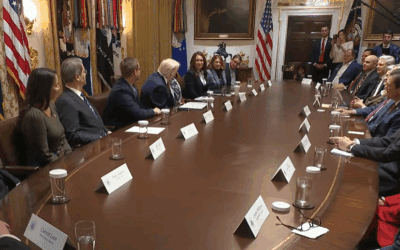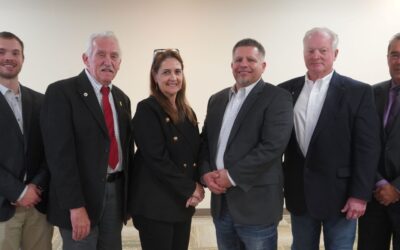Infrastructure is the grease that moves agricultural exports go across the world
By Joe Stoller, Chair
ISA Membership & Policy Committee

Infrastructure truly greases the path to easily move exports around the world. As farmers, we spend a lot of time talking about infrastructure. We understand that our job is not finished when we harvest the crop. We know that several more steps are necessary to get it to our customers.
In the past, the Indiana Soybean Alliance (ISA) has invested in studies to assess rural roads and bridges so that we can truck our soybeans and other farm commodities to grain terminals. Also, ISA’s Membership & Policy Committee (M&P) has organized tours of the locks and dams on the Ohio River to show how vital our inland waterway system is to transporting soybeans to ports that will connect with buyers all over the globe.
And, finally, ISA works extensively with the Soy Transportation Coalition (STC). Whether by rail, interstate highway, the inland waterway system or any other form of transportation, the STC seeks cost effective and reliable transportation systems for soybean shippers to customers. STC works with the American Soybean Association (ASA) and other policy groups to legislatively clear the path for more funded of infrastructure projects.
Really, the bottom line is that better transportation infrastructure reduces costs for farmers, and it increases U.S. farmers’ competitive advantage with other soybean exporters in the world.
In June, I attended the Indiana Container Shipping Conference and Intermodal Rail Tour. This conference was organized by ISA and the Indiana Corn Marketing Council, our state’s soybean and corn checkoff programs. The meeting attracted farm, business and transportation leaders to discuss ways to develop new shipping container ports and to expand ag export opportunities.
Our state government understands how important this is to Indiana’s economy. In fact, Indiana Gov. Eric Holcomb and Ports of Indiana CEO Jody Peacock both attended and spoke at the event. Along with those discussions, the meeting included a tour of Indiana Rail Road’s railyard.
Container shipping capacity has been identified as a key objective to support Indiana economic and agricultural growth. But what exactly is a container?
If you’ve been stopped at a railroad crossing in recent years, you’ve probably seen many containers and didn’t know it. Standard shipping containers are generally 8-feet wide, 8.5-feet tall and 20- or 40-feet long. Often you’ll see them stacked on flat cars on a train.
For overseas shipping, these containers will be lifted off of a train by a crane then loaded onto a ship to go to customers in Europe, Asia or other parts of the world. Ocean vessels can stack and carry more than 20,000 containers per trip.
This is an efficient way to move goods, and many industries other than agriculture have figured out ways to maximize it. The fact that other industries are utilizing containers actually is creating opportunities for Indiana farmers.
Many containers are entering the state filled with supplies and materials for manufacturing businesses, but they are returning empty. The shipping companies at the meeting said agriculture could take advantage of discounted rates by filling those containers with farm goods before they are returned to the railyards. These “backhaul” rates combined with demand for our soybeans is a good combination.
Our neighboring states seem to be taking advantage of increased container shipping. As the M&P chair, we will work to make sure that Indiana farmers are not left out of the shipping container trend.
Posted: July 20, 2024
Category: Indiana Corn and Soybean Post - July 2024, ISA M&P, Membership and Policy, News




